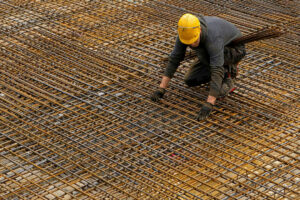Wholesale price growth of construction materials in Metro Manila steadied in June, due to slower increases recorded across most commodity groups, the Philippine Statistics Authority (PSA) said in a report.
Meanwhile, retail price growth rose, driven by the increase in the index of tinsmithry materials.
Nicholas Antonio T. Mapa, senior economist at Metropolitan Bank & Trust Co., said that construction activity remains strong overall, but slowed somewhat as indicated by the first-quarter gross domestic product (GDP) data.
Michael L. Ricafort, chief economist at Rizal Commercial Banking Corp., cited weak global prices of major commodities and high vacancy rates in the property market.
In the first quarter, GDP expanded 5.4%, slower than the 5.9% year-earlier rate.
Construction sector growth slowed 6.8% during the period, the weakest reading since the 3.4% expansion in the second quarter of 2022.
Last week, Bangko Sentral ng Pilipinas (BSP) Governor Eli M. Remolona said the BSP has room for two more rate cuts this year due to benign inflation as well as growing external risks.
During its June 19 policy meeting, the central bank announced a second straight 25-basis-point cut this year, bringing its policy rate to 5.25%.
Preliminary data from the PSA indicate that the construction materials wholesale price index (CMWPI) in the National Capital Region (NCR) settled at 0.2% compared to May.
However, it was slower than the 0.4% reading recorded a year earlier.
In the first half, the CMWPI averaged 0.2%, significantly lower than the year-earlier 0.8%.
The PSA attributed the slower growth to the behavior of prices of hardware (0.2% from 0.4%), tileworks (1.7% in June from 2% in May), plumbing fixtures and accessories or waterworks (0.6% from 0.9%), painting works (0.9% from 1.1%) and PVC pipes (0.1% from 0.6%).
On the other hand, price growth of sand and gravel accelerated to 0.6% from 0.4% while price growth in concrete products accelerated to 0.4% from 0.3%.
Faster price growth was also observed in lumber (1.1% from 1%), G.I. sheets (0.4% from 0.1%), doors, jambs, and steel casements (0.6% from 0.5%) and electrical works (0.5% from 0.3%).
Meanwhile, plywood prices declined 0.4% in that month after being flat in May while structural steel prices fell 2.2% against a 1.4% drop in May.
In a separate report, the PSA said the construction materials retail price index (CMRPI) rose 1.1% in June against the 1% posted both in May and a year earlier.
The June CMRPI reading was the strongest since the 1.2% posted in March.
In the six months to June, retail building materials price growth in the NCR averaged 1.1% from 1% a year earlier.
The CMRPI is based on 2012 constant prices, while the CMWPI is based on 2018 constant prices.
“The major contributor to the uptrend in the annual rate of CMRPI in the NCR was the higher annual increase observed in the tinsmithry materials index at 1.7% in June 2025 from 1.3% in the previous month,” the PSA said.
The acceleration in retail building materials prices was also driven by carpentry materials, whose prices increased 0.2% in June from 0.1% in May, while those of masonry materials accelerated to 1.2% from 1.1%.
Stronger growth was also recorded in painting materials and related compounds (2.2% from 2.1%) and miscellaneous materials (0.5% from 0.4%).
Meanwhile, slower growth was observed in electrical materials (2.2% from 2.3% in May) and plumbing materials (0.4% from 0.5%).
Mr. Ricafort said possible rate cuts in the next few months will further reduce borrowing costs for both property developers and end-users.
This, he said, would likely support demand and price growth of construction materials.
“We continue to expect construction activity to remain healthy as borrowing costs are likely to be lowered further,” Mr. Mapa said.
He added that investor sentiment remains positive, supporting both public and private construction activity. — Abigail Marie P. Yraola

